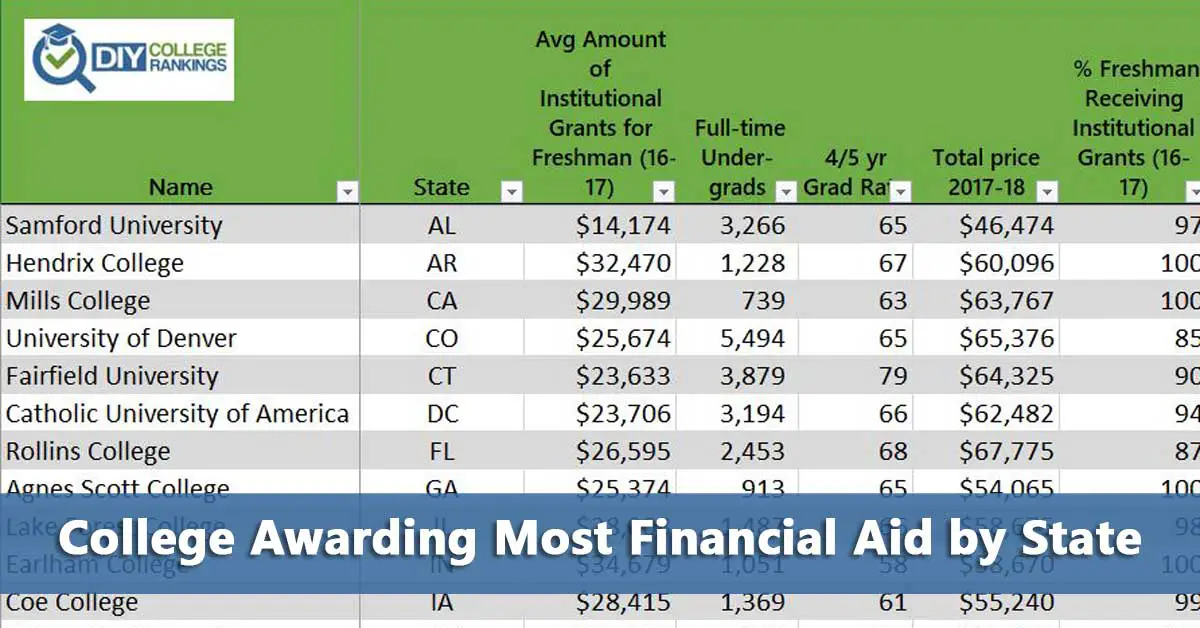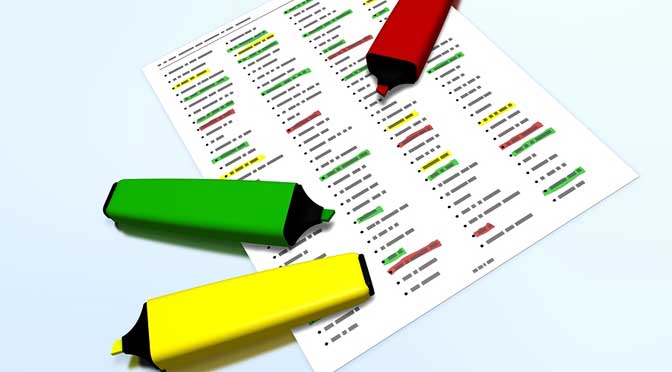 If you do a web search for “college search” chances are you’ll find the College Board’s Big Future at the top of the results list. It’s not surprising since they have historically already have access to some of the information many students and colleges have considered the most important in college admissions–test scores. But just how good is Big Future in helping you create your college list?
If you do a web search for “college search” chances are you’ll find the College Board’s Big Future at the top of the results list. It’s not surprising since they have historically already have access to some of the information many students and colleges have considered the most important in college admissions–test scores. But just how good is Big Future in helping you create your college list?
Creating College Lists
50-50 Highlights: Best Colleges for Merit Scholarships
 Students with high Expected Family Contributions (EFC) who want to pay less for college need to find those colleges most likely to provide generous merit aid. One way to do this is to identify colleges that have a high percentage of freshman without need who receive merit aid. The higher the percentage, the more likely students are to qualify for merit aid.
Students with high Expected Family Contributions (EFC) who want to pay less for college need to find those colleges most likely to provide generous merit aid. One way to do this is to identify colleges that have a high percentage of freshman without need who receive merit aid. The higher the percentage, the more likely students are to qualify for merit aid.
50-50 Highlights: College Awarding Most Financial Aid by State
 If you knew that the average amount of financial aid a college awarded freshmen was $25,000, would you consider it? With the cost of four years of college ranging from $100,000 to over a quarter of a million dollars, why wouldn’t you? I’m not saying you have to apply to the college, I’m just saying give it a look over because chances are it’s one that wasn’t on your radar. The table below lists all 50-50 colleges that provide the most institutional aid in each state according to the Integrated Postsecondary Education Data System. Since it is limited to 50-50 colleges, there are only 36 private colleges and 46 public institutions on the list.
If you knew that the average amount of financial aid a college awarded freshmen was $25,000, would you consider it? With the cost of four years of college ranging from $100,000 to over a quarter of a million dollars, why wouldn’t you? I’m not saying you have to apply to the college, I’m just saying give it a look over because chances are it’s one that wasn’t on your radar. The table below lists all 50-50 colleges that provide the most institutional aid in each state according to the Integrated Postsecondary Education Data System. Since it is limited to 50-50 colleges, there are only 36 private colleges and 46 public institutions on the list.
College Search Cheat Sheet
 Are you worried about finding the right college for your kids? Does the idea of researching colleges make you nervous? Do you find the idea of finding and paying for college daunting? Do you just want to know how to get started? If you answered “yes” to any to the previous questions, I’ve got a college search cheat sheet for you.
Are you worried about finding the right college for your kids? Does the idea of researching colleges make you nervous? Do you find the idea of finding and paying for college daunting? Do you just want to know how to get started? If you answered “yes” to any to the previous questions, I’ve got a college search cheat sheet for you.
50-50 Highlights: Colleges in Los Angeles
 I’m pretty sure the number of students who would want to attend college close to beaches and mountains and with sunny weather outnumbers those that don’t which is why many look for colleges in Los Angeles. With the area’s entertainment industry, international business connections, and tech development, Los Angeles has more than just its climate and geography to appeal to students. Maybe that’s why there are 49 colleges in the greater Los Angeles area (Combined Statistical Area) with 14 of them accepting at least 50% of students while having at least a 50% graduation rate qualifying them as 50-50 schools.
I’m pretty sure the number of students who would want to attend college close to beaches and mountains and with sunny weather outnumbers those that don’t which is why many look for colleges in Los Angeles. With the area’s entertainment industry, international business connections, and tech development, Los Angeles has more than just its climate and geography to appeal to students. Maybe that’s why there are 49 colleges in the greater Los Angeles area (Combined Statistical Area) with 14 of them accepting at least 50% of students while having at least a 50% graduation rate qualifying them as 50-50 schools.
50-50 Highlights: Colleges in the New York City Area
 When students think about going to college in New York City, NYU and Columbia are usually the first colleges that come to mind. And then maybe Vassar and Fordham will be mentioned. Someone might think about the City Colleges. But for too many students, going to college in New York City is pretty much limited to these schools. Which is too bad since there 84 4-year colleges with at least 500 students in the greater New York area. And 21 of them are 50-50 schools.
When students think about going to college in New York City, NYU and Columbia are usually the first colleges that come to mind. And then maybe Vassar and Fordham will be mentioned. Someone might think about the City Colleges. But for too many students, going to college in New York City is pretty much limited to these schools. Which is too bad since there 84 4-year colleges with at least 500 students in the greater New York area. And 21 of them are 50-50 schools.
Most Expensive Public Universities for Out-of-State Students
 Most people understand that private colleges have a much higher price tag than public universities which is why many never consider private schools. This is a shame since there are some private colleges that offer great opportunities along with generous financial aid. What a lot of people don’t realize is that out-of-state public institutions generally have the worst characteristics of both public and private colleges. They have the high price of private colleges with the limited financial aid of public universities.
Most people understand that private colleges have a much higher price tag than public universities which is why many never consider private schools. This is a shame since there are some private colleges that offer great opportunities along with generous financial aid. What a lot of people don’t realize is that out-of-state public institutions generally have the worst characteristics of both public and private colleges. They have the high price of private colleges with the limited financial aid of public universities.
The Must Read Chart for all Parents Thinking about Paying for College
 For the past few years, Troy Onink has had a Guide To FAFSA, CSS Profile, College Financial Aid And Expected Family Contribution at Forbes Magazine. It’s a great article that explains critical elements of the college financial aid process. I think the most valuable part of the guide is the Federal EFC Quick Reference Table. (Click here for an updated version of the EFC Chart with assets.)
For the past few years, Troy Onink has had a Guide To FAFSA, CSS Profile, College Financial Aid And Expected Family Contribution at Forbes Magazine. It’s a great article that explains critical elements of the college financial aid process. I think the most valuable part of the guide is the Federal EFC Quick Reference Table. (Click here for an updated version of the EFC Chart with assets.)
Why Your College List Should Start with Your Flagship University
 Long time readers of my blog know that I think that the start of any college search should begin with estimating your Expected Family Contribution (EFC). This simply sets the baseline for how much you should expect to pay. The next step should be looking up your state flagship university. Why? Because while your EFC sets your financial expectations, your state flagship serves as the ideal reference point for adding and comparing the schools you add to your final college list.
Long time readers of my blog know that I think that the start of any college search should begin with estimating your Expected Family Contribution (EFC). This simply sets the baseline for how much you should expect to pay. The next step should be looking up your state flagship university. Why? Because while your EFC sets your financial expectations, your state flagship serves as the ideal reference point for adding and comparing the schools you add to your final college list.









